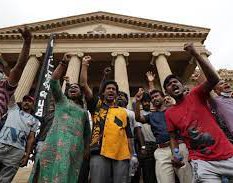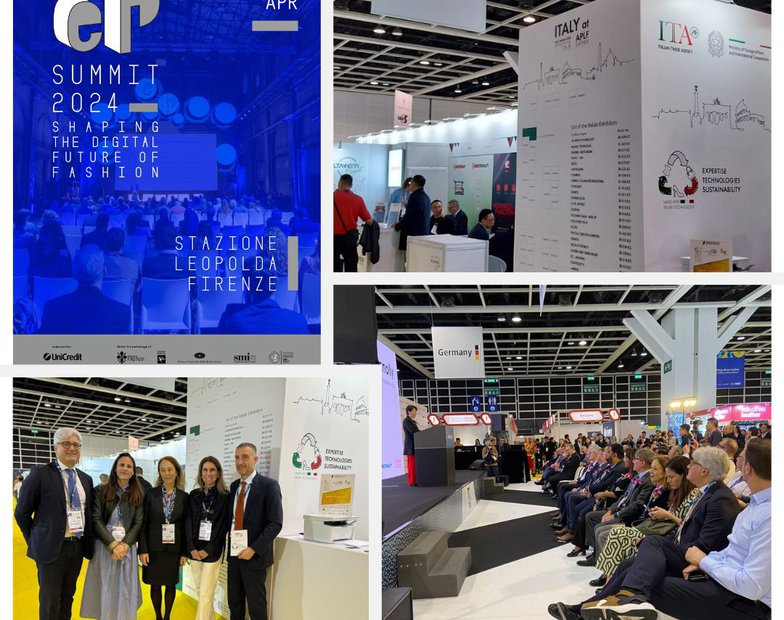As Sri Lanka’s new parliament took control Friday in the capital city of Colombo, global investors have been scrambling to take stock of the island nation’s rapidly shifting landscape. @SourcingJournal reports that Sri Lanka's garment sector has largely been holding its ground through months of turmoil, even as manufacturers field a crush of calls from jittery investors and buyers. How long will it last with inflation above 50%? A social bombshell that could overwhelm fashion OEMs
Now the country’s deeply distressed rupee is creating a new wrinkle.
Protests and anger roiled the capital as newly elected President Ranil Wickremesinge took office, with Dinesh Gunawardena ascending as prime minister. The former served six stints as prime minister, including the last two months when then-president Rajapaksha Gotabaya brought him in as a salve for the bankrupt country. Now, many are calling to rid top-level leadership of any trace of the previous regime responsible for Sri Lanka’s economic downfall.
A shortage of supplies, long lines for everyday essentials, power cuts and fuel shortages continue despite the political changes. Images of protestors streaming through Gotabaya’s residence as he went into hiding are still fresh.
But a few daring investors have arrived on Sri Lanka’s shores to assess the situation and figure out how to carry on.
Renuka M. Weerakone, director-general of Sri Lanka’s Board of Investment (BOI), the country’s investment promotion and facilitation agency, told Sourcing Journal Friday that most buyers seem keen to keep their long-standing links with the the apparel-producing nation, whose garment exports totaled $5.42 billion last year.
“We have endured far worse times over the last 30 years,” she said. “The BOI has thus far signed agreements worth $76 million for both new investments and expansions in the apparel sector in 2022. The total pipeline—together with pending approvals for investments and expansions in apparel—presently stands at $165 million.”
She pointed to a shift toward backward vertical integration with ‘”lucrative opportunities” in raw material production. “It is a trend that took greater shape during Covid and is becoming more of a focus at this time,” she added, citing the Eravur fabric processing zone, where a new investor from India committed $35 million on a facility that broke ground two weeks ago.
“Victoria’s Secret, for example, is using 100 percent counter sourcing for their cotton garments from Sri Lanka,” Weerakone said, noting a “50 percent increase in counter sourcing in terms of dollar value from January to June this year.”
She cited four new agreements from global players in Singapore, India, the U.S., and Malaysia, with Victoria’s Secret, Nike, Next and Hugo Boss now tapping a greater number of Sri Lankan producers. “All of these international brands are represented here and the companies that engage with them are also expanding,” she added.
Sri Lankan manufacturers are aiming for $6 billion in exports this year.
Yohan Lawrence, secretary general of the Joint Apparel Association Forum (JAAF), said the industry is witnessing a “level of cooperation between manufacturers that we’ve never seen.”
“There is a genuine country-first approach, and that is something,” he added. “Although it’s not been a walk in the park.”
Jeevith Senaratne, director of operations for Star Garments Group, corroborated the point, saying that buyers are naturally concerned about the unrest and upheaval.
“Every time there is a protest, questions are asked. We have maintained that amid every big protest we are still operating on the same scale because protestors are not trying to sabotage industry, they are making a statement to the government,” he said. The flip side, Senaratne continued, is that “every factory operated…at 100 percent capacity” on July 9 when hundreds of thousands of protestors took to the streets.
Policy changes have helped ease the burden, including allowing manufacturers to buy fuel directly from suppliers using their own money, manage worker transport and obtain diesel for generators.
“Our biggest concerns right now are about the external shocks that are beginning to impact demand,” he said, pointing to how inflation’s impact on high-consumption markets affects Sri Lanka’s “apparel manufacturing and exports.”
Some rival Asian stakeholders hope Sri Lanka’s loss is their gain, though buyers don’t seem to be jumping ship right now.
So far, Sri Lanka’s currency depreciation hasn’t led to any “fallout” that would benefit India’s garment industry, meaning there’s “no advantage to India as of now,” said Raja Shanmugham, president, Tirupur Exporters Association in Southern India, a large manufacturing base for Indian exporters.
“Because of the heavy depreciation of the Sri Lanka rupee, they are offering the world’s best price for the buyers right now. That gives them an advantage and they are somehow managing the show by organizing the fabric from India and other countries. They also have facilitation offices in other countries, which keeps the communication strong,” he said.
“There is chaos but still they are in operating mode. We are visualizing the country is out of order—and politically it may be so—but some systems are still working and the situation is being blown out of proportion by the media outside Sri Lanka. A lot of people have come to the wrong conclusion the business will shift to India and other places,” Shanmugham added. “It might happen, but it is not happening as of now.”
But other manufacturers in Sri Lanka noted the weak rupee’s harsh impact on inflation and what that means for pricing.
“We are all trying to do the best we can with adjustments to salary, raise wages, etc., to minimize the impact,” Star Garments’ Senaratne said of more than “50 percent” inflation that “everyone in the country is feeling.”
For the country of 22 million, resilience appears to be key.
When a bomb exploded near the building where BOI’s Weerakone worked at her first job in 1994, “we sat down and worked,” despite shards of shattered glass raining down on her office.
Sri Lanka’s current challenge “is another speed bump along the road, and we are confident we will get over it—the 14 zones are still functioning, the investors are still with us,” she said. “Life continues.”



